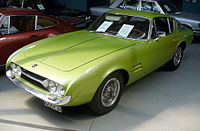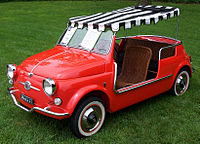
Giovanni Michelotti was one of the most prolific designers of sports cars in the 20th century. His notable contributions were for Ferrari, Lancia, Maserati and Triumph marques. He was also associated with truck designs for Leyland Motors, and with designs for British Leyland after the merger of Leyland and BMC.

The Volkswagen Karmann Ghia are a family of three overlapping sporty Volkswagen model series, marketed in 2+2 coupe (1955–1975) and 2+2 convertible (1957–1975) body styles, though German production ended one year before that in Brazil. Internally designated the Type 14 (1955–1975), the Type 34 (1962–1969), and the Type 145 TC, the Karmann Ghia cars combined the floorpans and mechanicals of the Type 1 / Beetle or Type 3 'ponton' models with styling by Italy's Carrozzeria Ghia, and hand-built bodywork by German coachbuilding house Karmann.

Pietro Frua was one of the leading Italian coachbuilders and car designers during the 1950s and 1960s.
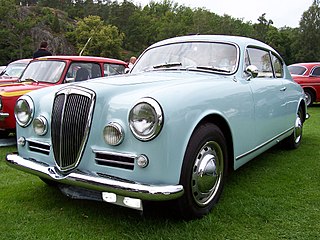
A grand tourer (GT) is a type of car that is designed for high speed and long-distance driving due to a combination of performance and luxury attributes. The most common format is a front-engine, rear-wheel-drive two-door coupé with either a two-seat or a 2+2 arrangement. Grand tourers are most often the coupé derivative of luxury saloons or sedans. Many iconic car models, such as the Ferrari 250 GT, Jaguar E-Type, and Aston Martin DB5, are considered classic examples of gran turismo cars.
Wilhelm Karmann GmbH, commonly known as Karmann, was a German automobile manufacturer and contract manufacturer based in Osnabrück, Germany. Founded by Wilhelm Karmann in 1901, the company specialised in various automotive roles, including design, production and assembly of components for a wide variety of automobile manufacturers, including Chrysler, Porsche, Mercedes-Benz and Volkswagen Group.
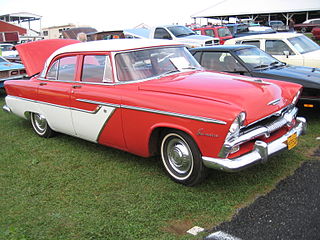
Virgil Max "Ex" Exner Sr. was an automobile designer for several American automobile companies, most notably Chrysler and Studebaker.
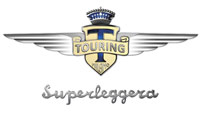
Carrozzeria Touring Superleggera is an Italian automobile coachbuilder. Originally established in Milan in 1925, Carrozzeria Touring became well known for both the beauty of its designs and patented superleggera construction methods. The business folded in 1966. In 2006 its brands and trademarks were purchased and a new firm was established nearby to provide automotive design, engineering, coachbuilding, homologation services, non-automotive industrial design, and restoration of historic vehicles.

The Fiat 2300 is a six-cylinder executive car which was produced by Italian automotive manufacturer Fiat between 1961 and 1968. The 2300 was made as saloon, estate car and coupé. The 2300 saloon is noteworthy as in 1966 it became the first Fiat model to be available with an automatic transmission.
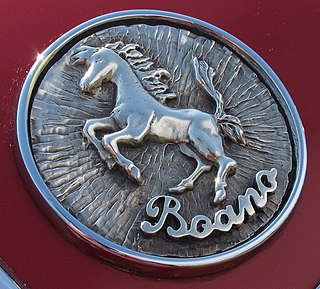
Felice Mario Boano was an Italian automobile designer and coachbuilder.
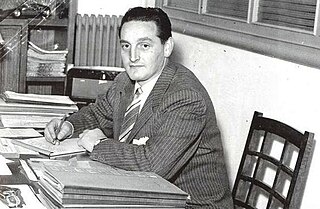
Luigi "Gigi" Segre was an Italian automotive designer noted for his business and engineering acumen during his stewardship and ownership of Carrozzeria Ghia (1953–63), one of an Italy's premier automobile design and coachbuilders.

Carrosserie Ghia S.A., Aigle was a Swiss automobile design and manufacturing company, commonly referred to as Ghia-Aigle.

The Fiat 8V is a V8-engined sports car produced by the Italian car manufacturer Fiat from 1952 to 1954. The car was introduced at the 1952 Geneva Motor Show. The Fiat 8V got its name because at the time of its making, Fiat believed Ford had a copyright on "V8". With 114 made, the 8V was not a commercial success but did well in racing. Apart from the differential, the car did not share any parts with the other Fiats; many parts were made by Siata and they used them for their cars. The 8V was developed by Dante Giacosa and the stylist Luigi Rapi. The engine was a V8 originally designed for a luxury sedan, but that project was stopped.
Tom Tjaarda was an American automobile designer noted for his work on a broad range of automobiles — estimated at over eighty — from exotic sports cars including the Ferrari 365 California and De Tomaso Pantera to high-volume popular cars including the first generation Ford Fiesta (1972) and the Fiat 124 Spider (1966).
The Turin Motor Show was an auto show held annually in Turin, Italy. The first official show took place between 21 and 24 April 1900, at the Castle of Valentino, becoming a permanent fixture in Turin from 1938 having shared it with Milan and Rome until that time. From 1972, the show was held biannually and in 1984, it moved into Fiat's shuttered Lingotto factory.
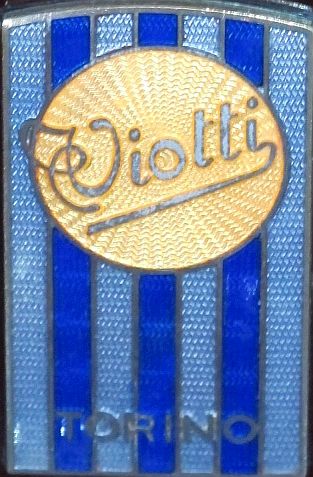
The Carrozzeria Viotti was an Italian coachbuilding company active between 1921 and 1964. The company was founded in Turin, Italy by Vittorio Viotti. Designers like Frua and Mario Revelli worked for the company. It was the first coachbuilding company in Italy to set up a proper production line.
Concorso d'Eleganza Villa d'Este is a Concours d'Elegance event in Italy for classic and vintage cars. It takes place annually near the Villa d'Este hotel in Cernobbio, on the western shore of Lake Como in northern Italy. Since 2011, the event has taken place in the second half of May.
Sergio Sartorelli was a noted Italian automotive designer and engineer.

OSI, acronym for Officine Stampaggi Industriali was a coachbuilding company founded in 1960 in Turin by former Ghia president Luigi Segre (1919–63) and Arrigo Olivetti (1889–1977) from the Fergat company, a manufacturer of automotive components. OSI was intended to be an independent design branch of Ghia's, focussing on niche efforts.

Stabilimenti Industriali Farina was an Italian automotive coachbuilder established by Giovanni Carlo Farina (1884–1957) in 12 Corso Tortona.

Giovanni Savonuzzi was an Italian automobile designer.





